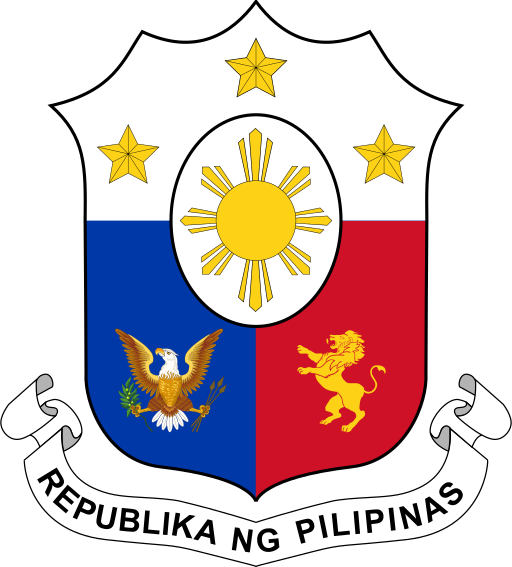February 16, 2018, Manila
A unique assistance program that aims to make the country’s cities more livable and sustainable through the development of public open spaces is being initiated by the Department of Budget and Management (DBM).
With a funding of P2.5 billion, the assistance program is a parallel endeavor to the government’s massive national infrastructure development program, “Build, Build, Build”, and in close collaboration with local government units.
The program will support city governments in creating a “breathing space” by enriching open spaces through the establishment of parks and gardens, upgrading streets and waterfronts, and revitalizing plazas. It will also improve the connectivity and accessibility of spaces by constructing eco-friendly bike lanes and walkways.
Urban population and the urgency of investing in public open space development
According to the World Health Organization (WHO), 54% of the 7.2 billion world population in 2014 resided in urban areas, with a higher concentration in less developed regions of the world. It further forecasted that by 2050, 70% will be living in cities.
The situation is no different in the Philippines where the urban population increased to more than 50 million in the past five decades. This will balloon to 102 million by year 2050, or more than 65% of the Philippines’ total population, according to the Philippines Urbanization Review by the World Bank Group.[i]
The rising urban density in the country is creating more challenges for the Philippines’ local government units and citizens. Problems previously not experienced such as overcrowding and traffic congestion, as well as the lack of open spaces where people can socialize and practice an active lifestyle, are now a daily obstacle to urban dwellers. These conditions significantly make cities less livable and less sustainable. They also make communities more vulnerable against natural and man-made disasters.
With these intensifying issues, there is a pressing need for local government units and citizens to find ways to manage urban evolution, to steer their cities towards sustainable development.
Cities are not made up of just buildings and streets. The most successful and livable ones have open spaces which take up half of their land area. The WHO reports that successful cities provide a minimum of 9 sqm of green space per citizen. Thus by acknowledging and building on the great potential of public open spaces in cities and urban zones, governments and citizens can improve the overall quality of life.
Inspiration
Several places from around the country have inspired the creation of the DBM-initiated assistance program.
One is the highly successful Iloilo Riverside Esplanade which won Iloilo a spot in the 2014 list of five most walkable cities recognized by the national government. The Esplanade is the result of the collaborative efforts between the Iloilo City Government and its locals, with the help of Senator Franklin Drilon, to rehabilitate the Iloilo River and relocate 1,000 informal settlers. The establishment of the linear park created a safe, pleasant, and relaxing space for the residents - a respite in the middle of the bustling city.
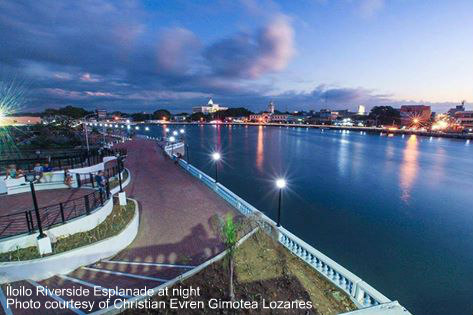
Iloilo Riverside Esplanade
Photo courtesy of Christian Evren Gimotea Lozanes
Source: iloilo-travel-guide.blogspot.com
UNESCO World Heritage Site Vigan, Ilocos Sur has also inspired the assistance program. The historic city, like Iloilo, was awarded for its keen efforts to make the place livable and walkable despite the heavy influx of tourists. Vigan’s most famous spot, Calle Crisologo, is closed to motorized vehicles to protect the ancient houses and structures from damage due to vibrations. Pedestrianizing the street has also ensured the safety of residents and tourists while enjoying the unique open space, and consequently spurring economic activity in the area.
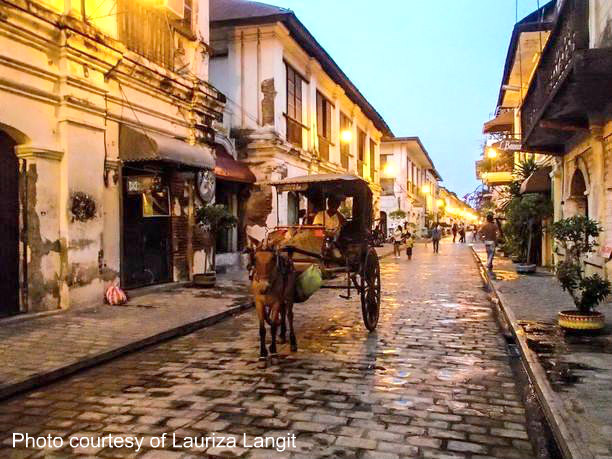
Calle Crisologo, City of Vigan, Ilocos Sur
Photo courtesy of Lauriza Langit
Source: Philippine PRIDE Facebook page
Meanwhile, People’s Park in Davao City was previously a poorly-maintained playground before it was transformed into what is now a popular recreational area with an oval race track for joggers, lush greenery, man-made bodies of water, and various artworks scattered around the area, reflecting the vibrant culture of the city’s inhabitants.
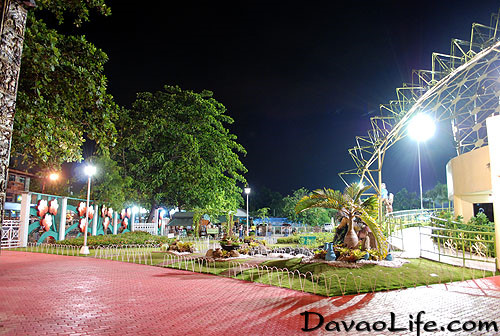
Photo courtesy of DavaoLife.com
Source: https://www.davaolife.com/peoples-park-in-davao-city-3.html
The Iloilo Riverside Esplanade, Vigan City, and Davao City People’s Park have become a significant part of each city’s identity. These public open spaces, cherished by their people, provide a sanctuary from the busy and crowded urban areas, while promoting a healthy lifestyle and creating opportunities for socialization and community-building. The establishment and revitalization of the public open spaces has also increased the value of nearby real estate, thus attracting more investors and entrepreneurs into the area and creating more jobs for the residents.
The assistance program aims to recreate the positive transformation caused by these cities and spaces to their inhabitants, reshaping day to day urban living for the better.
Potential of public open spaces for disaster risk reduction, emergency response
With its high exposure and vulnerability to earthquakes, typhoons, tsunamis, flooding, and other natural hazards, worsened by poor living conditions especially in many urban and remote areas, the Philippines is a hotspot for calamities. Several studies in the recent years, such as the WorldRiskReport[ii] (2017) and the Human Cost of Weather-Related Disasters[iii] (2015) have in fact listed the country as one of the most disaster-prone places in the world.
While this has created a negative image for the Philippines, this has also placed the country in a unique position to become a global leader in formulating creative and sustainable plans of action for risk-reduction and community resilience. One strategy currently being explored by many communities is the establishment of well-designed public open spaces in urbanized areas where population is dense and vulnerability to natural and human-induced disasters is high.
Public open spaces, aside from providing environmental, and physical and mental health benefits to citizens, have proven to be useful for emergency response and disaster resilience.
A particular example is a small linear park in Cagayan de Oro City, constructed primarily to enable heavy equipment to access and clean a polluted waterway, the Bitan-ag Creek, alongside of which many informal settlers have built their homes. The linear park is a partnership project between the local government and the UN-Habitat.
On October 12, 2017, a year and a half after the completion of Phase I of the linear park, a huge fire razed around 30 houses and business establishments in the communities near the linear park. The fire was said to have started around 3:31 in the afternoon and was declared ‘under control’ an hour later. The Cagayan de Oro Fire District estimated that around P1.6 million worth of properties were damaged or destroyed.
In a news story[iv] on the fire incident, published by the SunStar Cagayan de Oro on October 12, 2017, City Social Welfare Chief Teddy Sabuga-a stated that the linear park played a critical role in fire suppression as it enabled the trucks to pass through the area to put out the fire and rescue victims.
Aside from providing easy passage for trucks during a fire and other emergencies, a public open space, like the Bitan-ag Creek Linear Park, can serve as an evacuation site and drop-off point for relief operations. It can also be a site where first aid is given to victims. Furthermore, a public open space and green infrastructure can be combined as a strategy for critical flood risk management especially for urban areas that experience frequent flooding like Metro Manila.
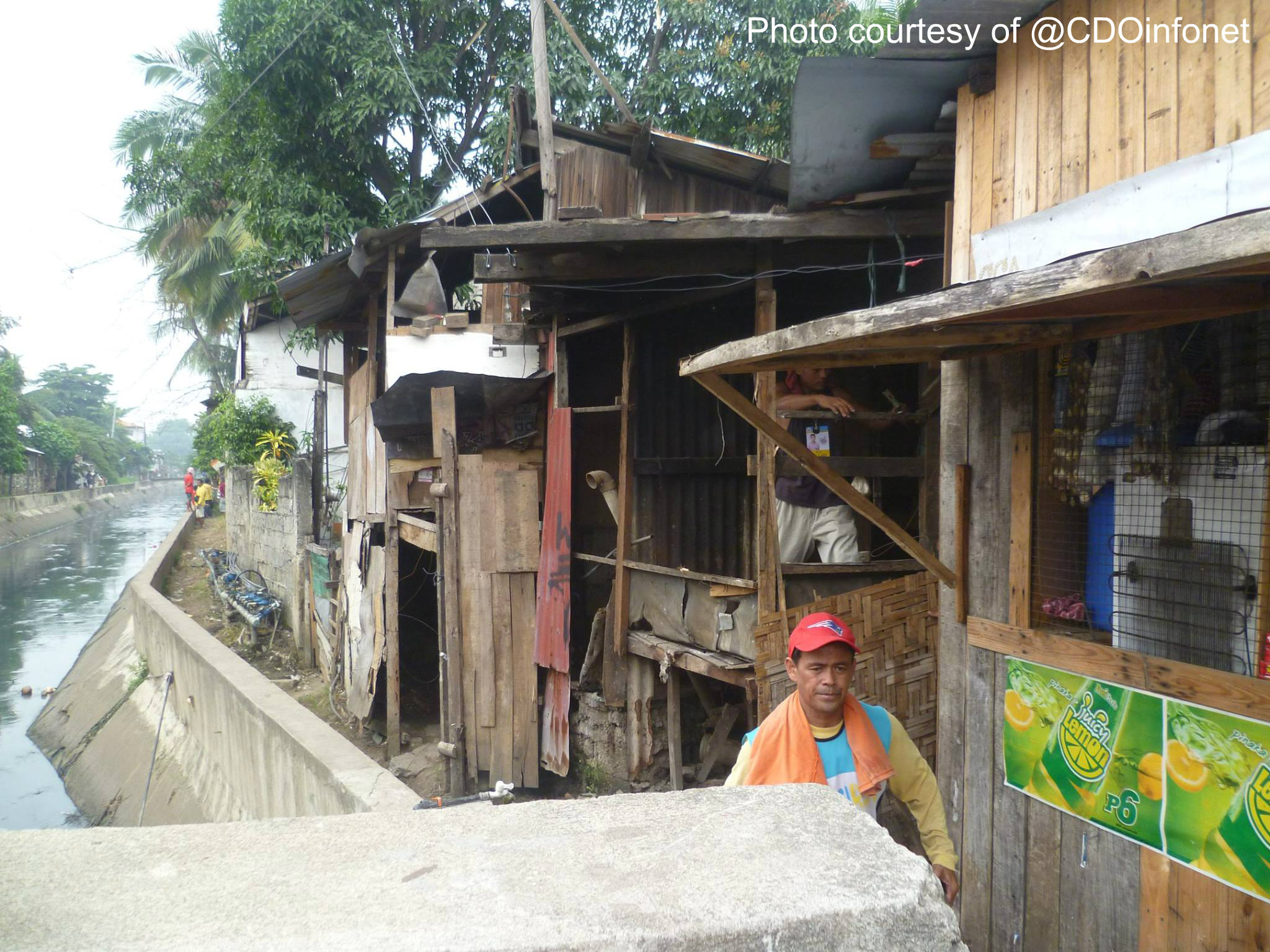
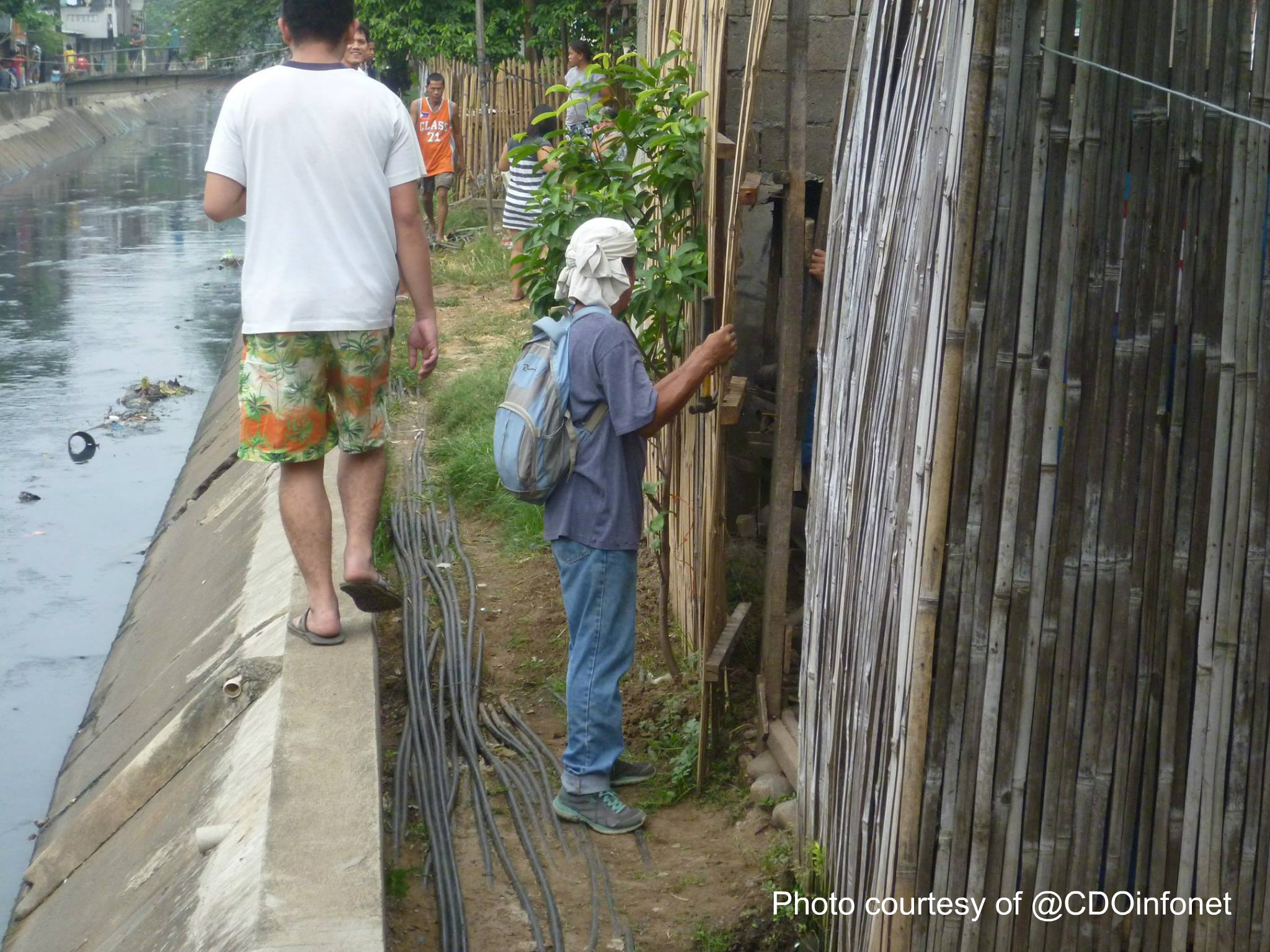
Bitan-ag Creek and the settlements in Barangay 22 before the construction of the Linear Park
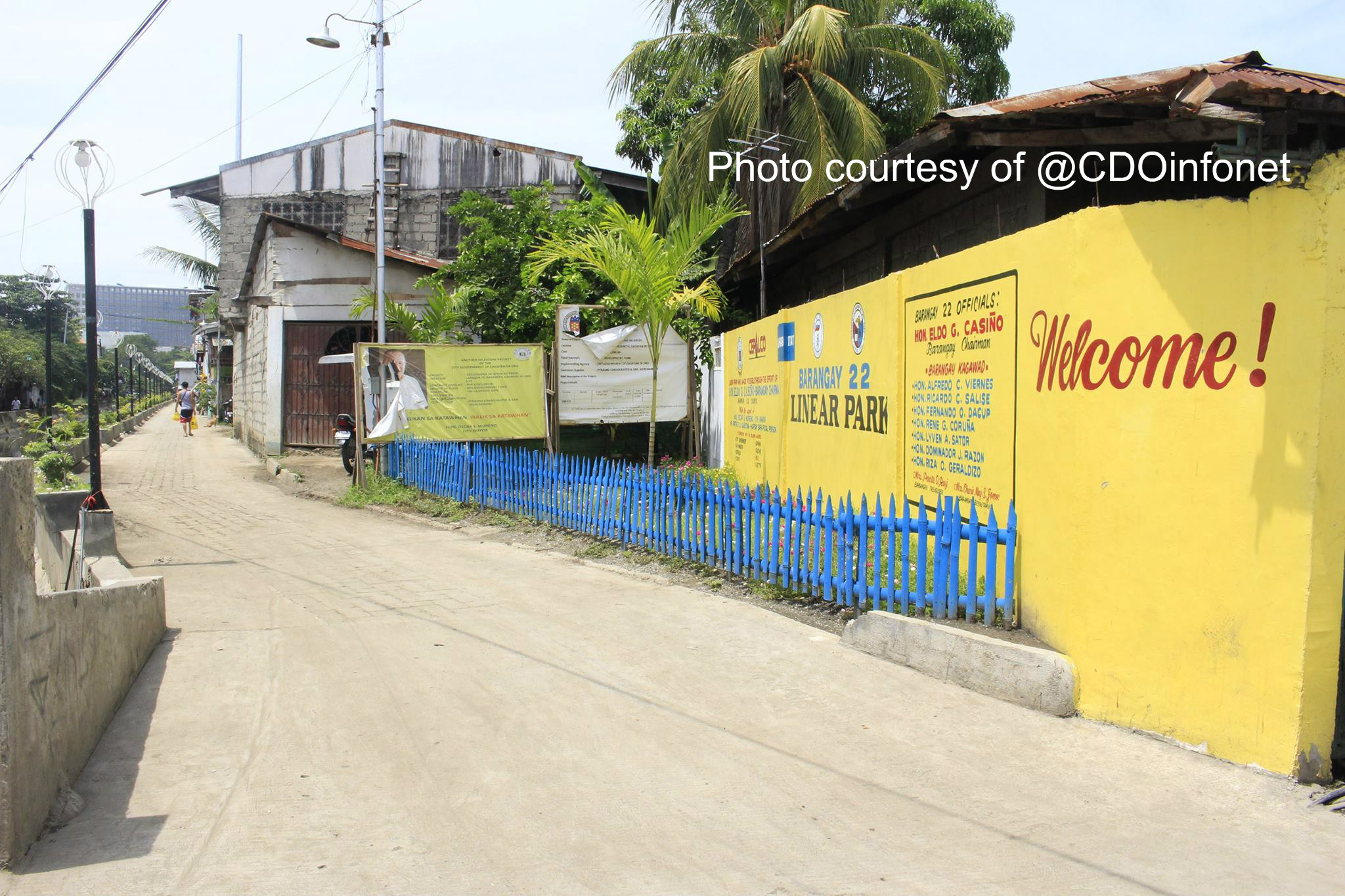
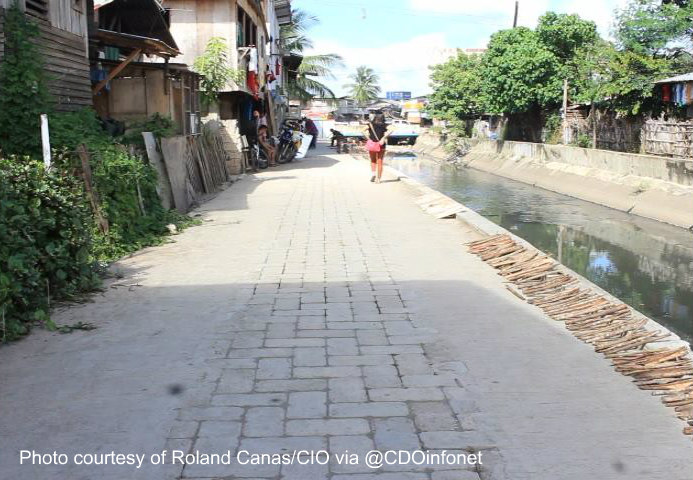
Linear Park in Barangay 22, Cagayan de Oro City
National policy directives supported by the assistance program
The assistance program is in line with a number of national policy directives, one of which is the 11th goal in the United Nations’ 17 Sustainable Development Goals (SDG) for 2030: “Make cities and human settlements inclusive, safe, resilient, and sustainable.”
Within this goal, Target 7 (of 11) particularly focuses on public spaces, stating: “By 2030, provide universal access to safe, inclusive and accessible, green and public spaces, in particular for women and children, older persons and persons with disabilities.”
In October 2016, at the United Nations Conference on Housing and Sustainable Urban Development held in Quito, Ecuador, global delegations including the Philippines adopted the New Urban Agenda, a new guide for the planning and management of cities towards sustainable urbanization. The New Urban Agenda is considered as an extension of the 2030 Sustainable Development Goals.
The Quito Implementation Plan for the New Urban Agenda contains a list of “transformative commitments for sustainable urban development,” of which the 53rd commitment states: “We commit ourselves to promoting safe, inclusive, accessible, green and quality public spaces as drivers of social and economic development[.]”
A year before the adoption of the New Urban Agenda, 20 Philippine City Mayors convened to discuss the crucial task of creating “inclusive, healthy, safe, connected, integrated, and productive cities” in an interactive conference on “Public Space and the New Urban Agenda” held in Pasay City. In the said conference, the leaders affirmed the significance of improving streets and public spaces in revitalizing urban communities.
The adoption of Sustainable Development Goal 11.7 as well as the New Urban Agenda reflects our government’s understanding of the role of public spaces in the sustainable development of cities.
The assistance program is also aligned with the urban planning and design strategies of the National Urban Development and Housing Framework, the development framework for urban and urbanizing areas aimed at achieving the objectives of Republic Act No. 7279 (Urban Development and Housing Act of 1992).
Joining the program
Cities are invited to submit to the DBM Office of the Secretary their expression of interest along with the conceptual design of their proposed project in order to join the program.
The DBM is also currently preparing a series of consultation workshops for city governments who wish to take part in the assistance program.
To access the guidelines on the implementation of the program, read Local Budget Circular No. 116 here:
http://www.dbm.gov.ph/wp-content/uploads/Issuances/2018/Local%20Budget%20Circular/LBC-No116.pdf.
Follow @DBMgovph on Facebook and Twitter for updates.
(30)
[i] (Rep.). (n.d.). Retrieved from http://documents.worldbank.org/curated/en/963061495807736752/pdf/114088-REVISED-PUBLIC-Philippines-Urbanization-Review-Full-Report.pdf
[ii] WorldRiskReport. (n.d.). Retrieved February 12, 2018, from http://weltrisikobericht.de/english/
[iii] (Rep.). (n.d.). Retrieved from https://www.unisdr.org/2015/docs/climatechange/COP21_WeatherDisastersReport_2015_FINAL.pdf
[iv] Orias, P. J. (2017, October 12). Fire razes 30 houses in Oro. Retrieved February 15, 2018, from http://www.sunstar.com.ph/cagayan-de-oro/local-news/2017/10/13/fire-razes-30-houses-oro-569196
